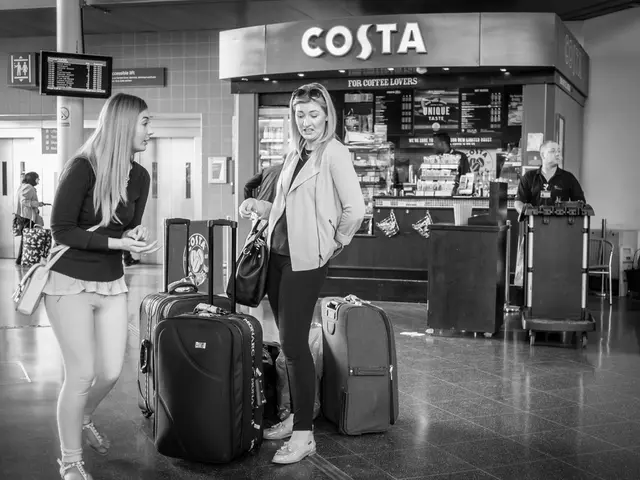Services scaled back in Montreal due to the pandemic situation.
Public transit’s reality check: pandemic and telecommuting take a toll
It's been a rough ride for public transit, especially since the COVID-19 pandemic began. The Metropolitan Transportation Authority (MTA) and Société de transport de Montréal (STM) have faced challenges, with uncertain times brewing since 2020. In the city of Montreal, major bus lines have seen a drop in ridership, leading to service cuts and a rethink of schedules.
On bus lines such as 105, 80, and 51, the pandemic and telecommuting have left an impact almost erasing the "sardine class." Yet, there are lines where overcrowding still persists.
Before 2019, the STM's bus line 105 boasted a whopping 185 westbound daily departures. However, that number has steadily reduced, hitting a grim 123 in 2024, marking a 33.5% reduction in westbound trips. For eastbound trips, the reduction was 28%.
So, what’s happening on the ground? Despite the service cuts affecting bus line 105, the impacts might be difficult to perceive. During rush hours, buses pass every 3 to 4 minutes. Melanie, a student met at the bus stop on Hingston Avenue, explains, “I don't have to run because I know another one will come soon.” However, not every day is the same, with buses sometimes passing by without stopping due to overcrowding.
Line 80 on Parc Avenue has also seen a reduction in the number of daily trips between 2019 and 2024, with 34% northbound and 32% southbound. The morning rush hour paints an even starker picture, with nearly half of the northbound trips and a third of the southbound ones absent.
The STM conducts a precise analysis of the ridership for each trip to determine the frequency based on the number of passengers on the buses. They aim to exceed 55 passengers on board as little as possible. In reality, the crowding measured indicates that the “comfort” norm on bus 80 was only 2.3% during peak periods in November. For bus 105, the rate was 13.8%, and for bus 51, a worrisome 18%.
To maintain minimum service quality, the STM might hesitate to further reduce services on lesser-used lines, according to Michel Tremblay, director of Planning and Network Development. However, as Philippe Jacques, co-director general of Trajectoire Québec, points out, issues start to surface when leaving Montreal. In areas outside major centers, the reduction in service has a significant impact.
Overall, STM buses have not returned to the sardine can conditions of 2019, with the STM only recovering about 85% of pre-pandemic ridership. The organization promoting public transit wants services to improve, arguing that underfunding and maintaining assets, particularly the metro, should be the main concern.
This reality check highlights the challenges public transit faces in post-pandemic times. Adapting to the changes brought about by the pandemic and telecommuting is key to steering transit systems towards the ride of the future.
In the face of reducing ridership and service cuts on certain lines, the government-run Société de transport de Montréal (STM) may struggle to maintain an acceptable level of service, with some lines seeing overcrowding persist while others barely recover 85% of pre-pandemic ridership. Meanwhile, private industries such as transportation could face challenges in adapting to changing public-transit needs following the pandemic and telecommuting trend.








